We use cookies to make your experience better. To comply with the new e-Privacy directive, we need to ask for your consent to set the cookies. Learn more.
Tudor at the 2025 Geneva Watch Fair: A Solid Choice or a Missed Opportunity? — Comprehensive Analysis of the Annual New Releases
Introduction: Conservative Strategy Sparks Debate
The 2025 Watches & Wonders Geneva has concluded, and as Rolex's "affordable sibling," Tudor's new releases this year have sparked widespread discussion within the industry. Compared to Rolex's groundbreaking Land-Dweller series, Tudor opted for a more conservative product approach—mainly color innovations without movement upgrades.
The most talked-about features include the debut of the Black Bay Pro with a "protein white" dial and the return of the Black Bay 58 in "Burgundy." However, the anticipated thinner GMT movement and the new Pelagos 42 upgrade did not materialize. This "tweaking rather than reforming" strategy disappointed some enthusiasts and has led to market skepticism about Tudor's "Born to Dare" motto.
"Tudor has only performed cosmetic work this year," senior collector Menchmann (@Menchmann) straightforwardly stated on social media. "They could have utilized the thinner GMT movement developed last year, but still linger on technology from seven years ago." However, some supporters argue that gradual evolution reflects Tudor's prudent response to market feedback. "Not all innovations need to be radical; reliability is Tudor's core strength," commented renowned watch critic Jay (@Jay1) at the fair.
In this article, we delve into Tudor's 2025 new lineup, examining the design innovations, market positioning, and potential future directions of the brand, in combination with feedback from global watch enthusiasts.
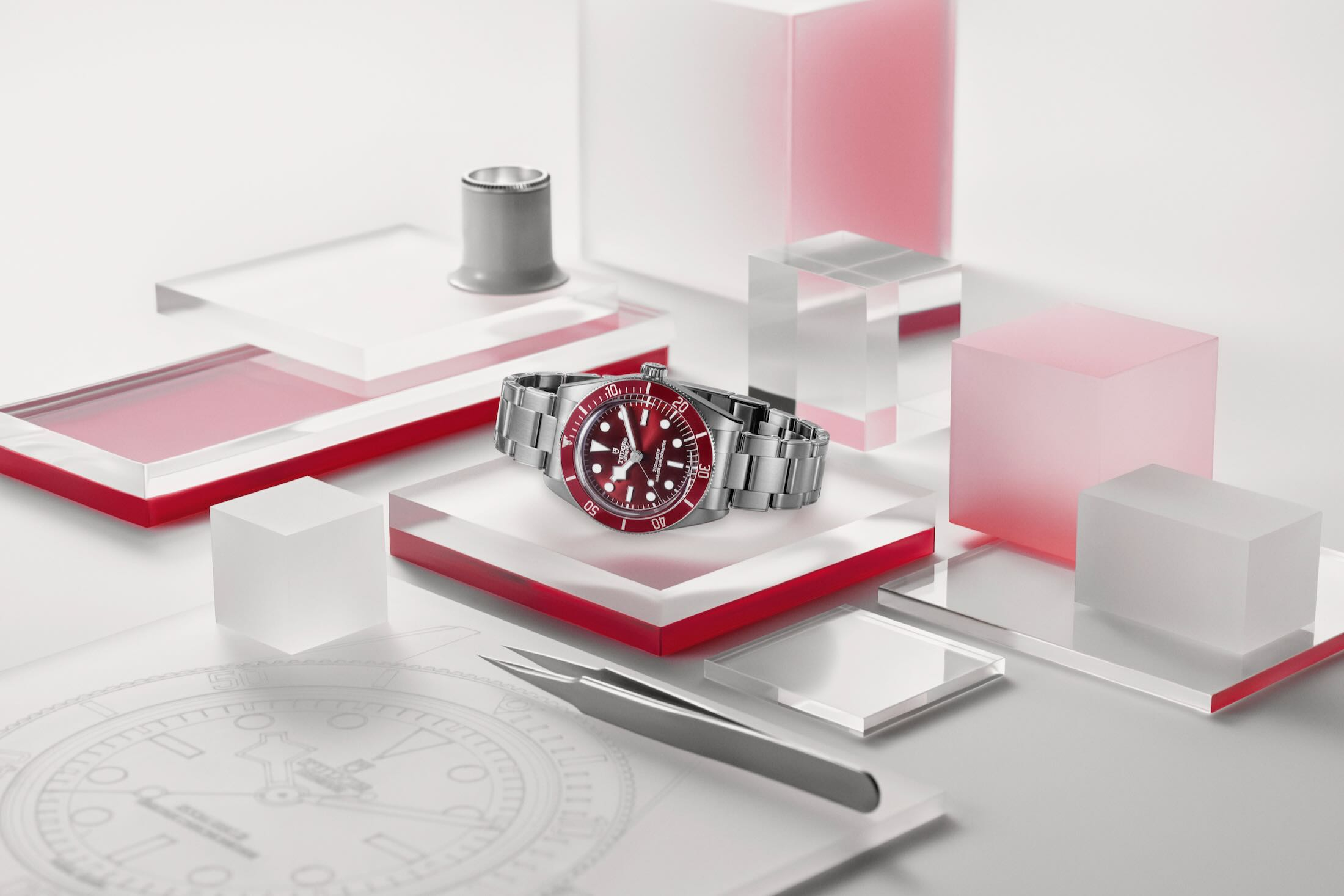

Tudor Black Bay 58 Burgundy: When Retro Gene Collides with Modern Certification
Design Revolution: From Burgundy Narrative to Material Controversy
Tudor has first applied burgundy both to the dial and bezel, with the dial showcasing a dynamic gradient from cherry red to deep burgundy, inspired by the unproduced Submariner prototypes from the 1990s (Series 7900). This design is likened by watch media "Horology Today" to "a barrel-aged version of craft beer"—a classic recipe rejuvenated through meticulous detailing. The controversial points include:
- Aluminum Bezel Adherence: Retaining the aluminum bezel sparked polarized reviews. Supporters argue it restores the unique worn texture of historical models, while critics question its durability, dubbing it a "medieval armor"—aesthetically pleasing but requiring careful maintenance.
- Gilding Removal: The omission of the series' iconic gilding in favor of cool-tone silver-white hands is perceived by some collectors as a "betrayal of vintage purity."
Technical Leap: METAS Certification and Bracelet System
The main upgrade lies in the 39mm case housing a METAS Master Chronometer-certified MT5400-U movement (precision of 0/+5 seconds per day), although the 14.6mm thickness is humorously compared to a "miniature submarine hatch." The bracelet system has become a market focus:
- Five-Link Jubilee Bracelet (additional $150): Imparts a dressy feel to the sports watch; user reviews reveal incompatibility with the older 58 lugs, highlighting Tudor's "hidden barriers in iteration."
- Pricing Strategy (starting at $4,275 for rubber strap): Sparks debate on whether a 15% premium is justified. Some view METAS certification as "invisible wings"—important yet not immediately perceptible.
- Market Pulse: Polarized Emotional Projection
Proponents view it as "the digital rebirth of 1990s dive watches":
- The five-bead bracelet praised as "silk lining beneath the armor," balancing ruggedness with refinement.
- Red tones resonate with collectors, reminiscent of the scarce aesthetics of the 1989 TAG Heuer limited edition.
Critics focus on design contradictions:
- The mix of snowflake hands and round markers is likened to "Gothic cathedral stained glass embedded in a modern art gallery"—evident style conflict.
- Industry analysts point out this controversy embodies Tudor's "tightrope positioning"—appeasing purists while accommodating the tech-inclined.
Professional Commentary: What Defines a 'Modern Vintage'?
The Burgundy Black Bay 58's deeper significance lies in injecting professional certification into classic dimensions. Despite doubts about the aluminum bezel and pricing, it achieves a scenario breakthrough from "diver's gear to cross-boundary everyday wear" through color and bracelet innovation. As "Wristwatch Weekly" states: It's like "an improvised variation of a jazz standard"—with familiar melodies concealing innovations that bring a knowing smile to seasoned fans.
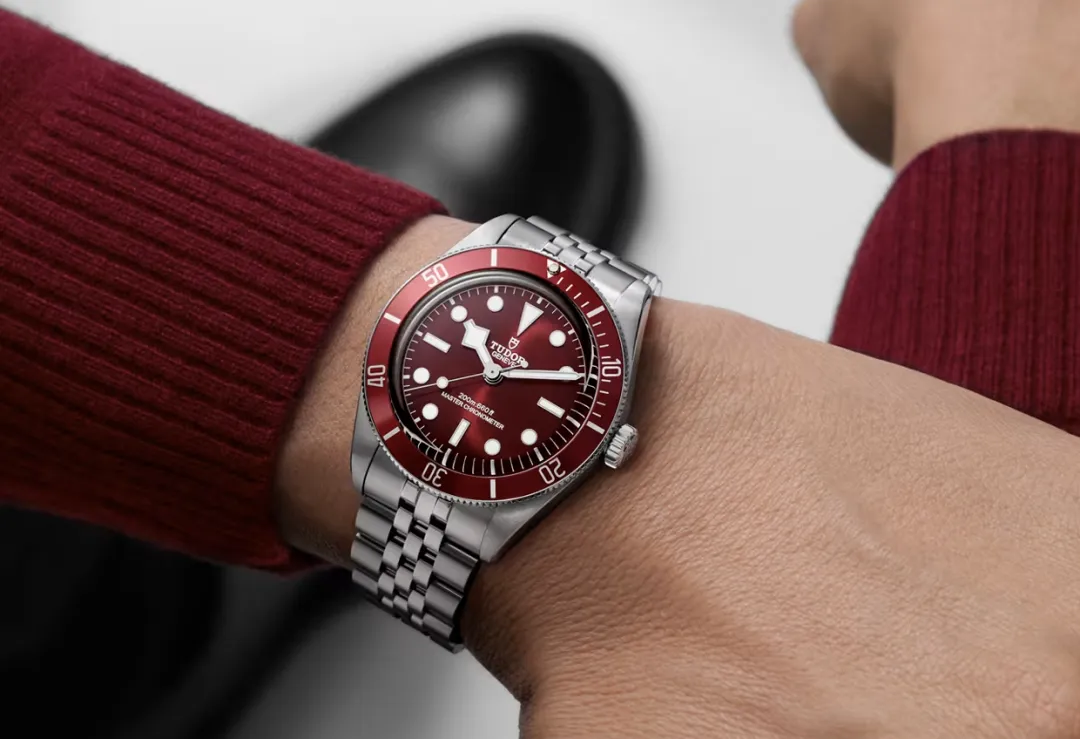

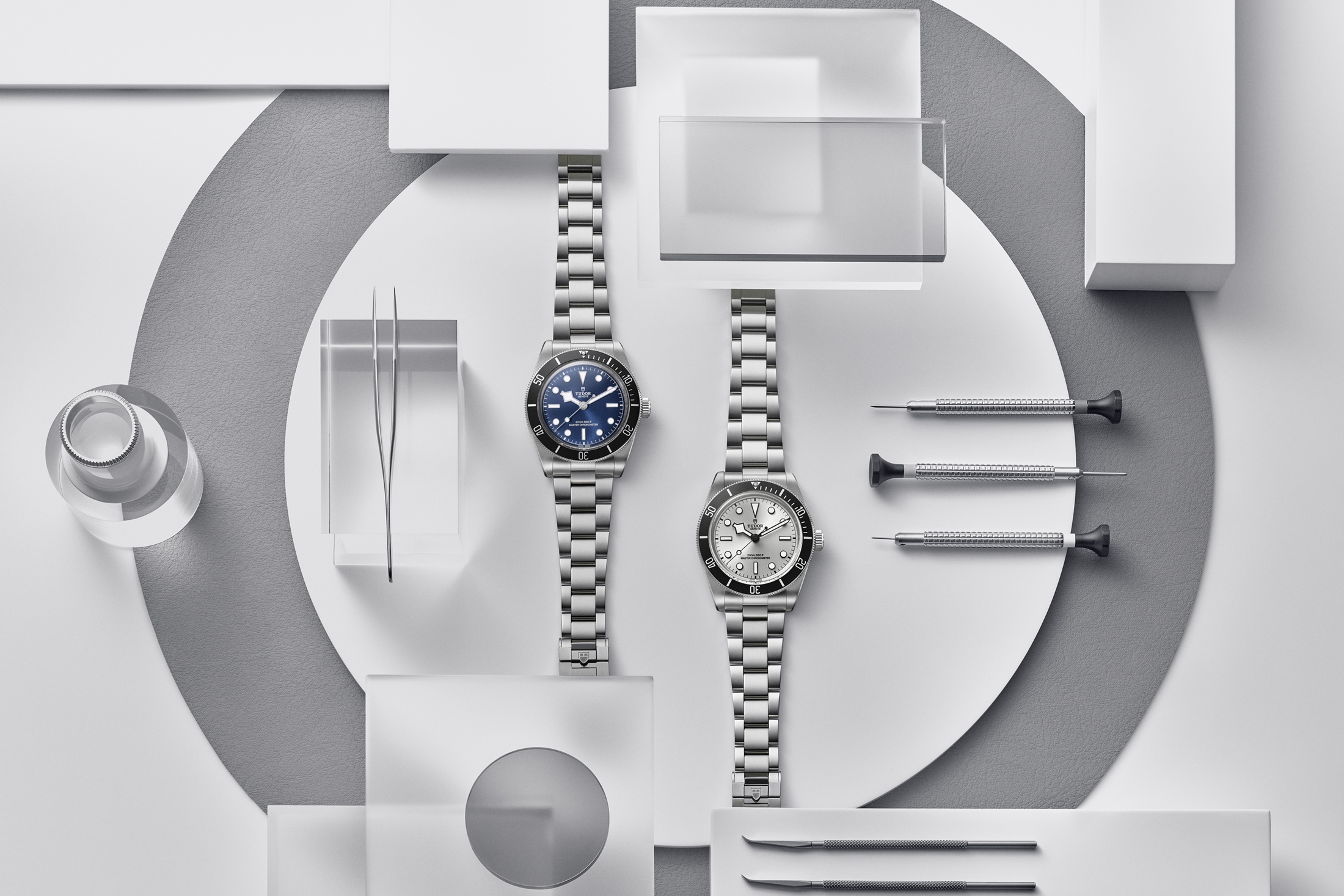

Tudor Black Bay 68: The Reverse Course in the Era of Large Watches
Design Philosophy: When 'Bigger is Better' Meets Stainless Steel Aesthetics
The 43mm Black Bay 68 (model yet to be confirmed) released in 2025 marks Tudor's reevaluation of the large watch market. With a domed sunray dial available in silver and Tudor blue, the gold elements are entirely discarded. It’s described by "Horology Today" as "the finale of a stainless steel symphony." Key points of contention include:
- 43mm Paradox: Amid an industry-wide trend towards reducing diameters (like the 37mm BB54), this move is interpreted by some media as "pandering to the era of Apple Watch Ultra" (citing user @V7485).
- Seamless Strap: Utilizing, for the first time, a smooth-sided three-link design, supporters praise it as "a warrior shedding armor," while detractors bemoan the loss of the series' distinctiveness.
Technical Framework: METAS Certification and 'Large but not Clumsy' Balance
Equipped with the MT5601-U movement (65-hour power reserve + anti-magnetic silicon hairspring), the absence of precise thickness data spurred speculation. User feedback is sharply divided:
- Big Wrist Group: User @Schmal_343 lauds it as "a lighthouse on the wrist," with 43mm just right to alleviate previous "feeling like wearing a ladies' watch."
- Comfort Concerns: An anonymous collector jokingly compared its side profile to "a fat skinny guy still learning to dress up" (in reference to Submarine Observation 70's original analogy).
- Professional Review: Emphasizes T-Fit buckle’s 8mm micro-adjustment as a "technical compensation for the weight of large watches."
Market Voices: Torn Aesthetic Consensus
Advocates declare it a "Rolex Explorer II 226570's affordable antidote," particularly appealing to large watch enthusiasts averse to Rolex's premium:
- User @Square believes Tudor "achieved what Rolex couldn't"—introducing a new color system perfectly matched to the case size.
Critics accuse it of "using size to overshadow innovation deficiency," asserting the thickness issue highlights limits in movement integration capability.
- Pricing Strategy ($4,700) becomes a consensus point—reflecting the value of METAS certification without excessively departing from Tudor's "luxury watch for the working class" positioning.
Existential Meaning: The Declaration of the Size War
Beyond the specifications, Black Bay 68 embodies Tudor’s challenge to industry trends: when 39mm becomes politically correct, should we reserve choices for other users? Its controversy validates market diversity needs—some seek refinement, others crave presence. This might be the most valuable revelation of this "countertrend beast."
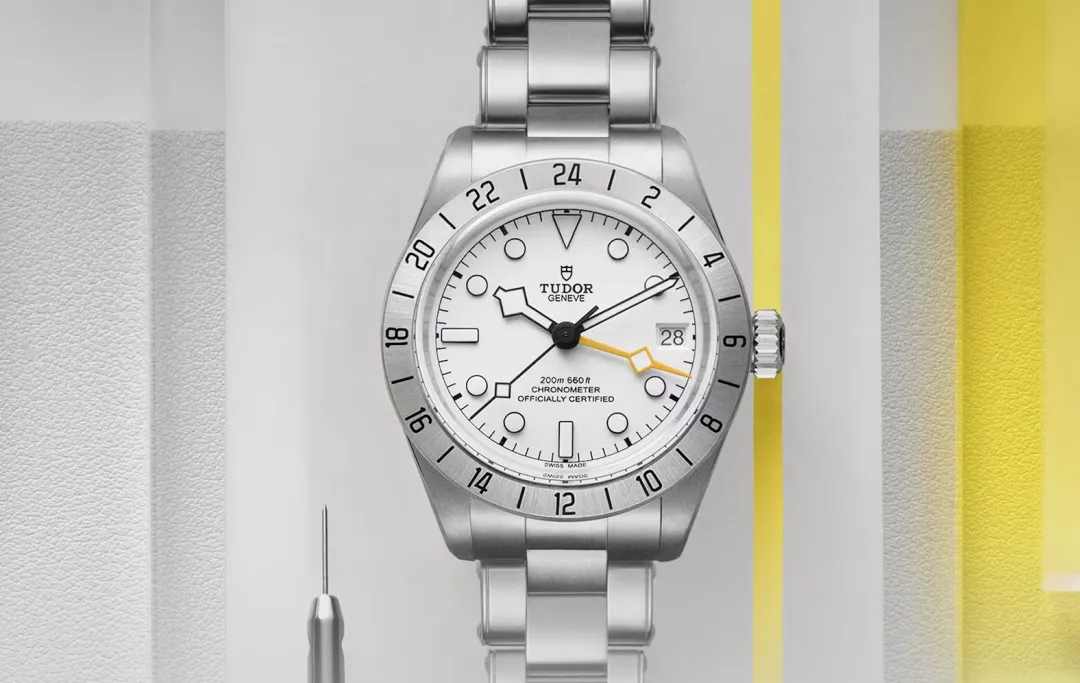

Tudor Black Bay Professional: Polar White Dial's Polar Breakthrough
Design Language: Tool Aesthetics in the Land of Ice and Snow
The newly released Black Bay Professional (model yet to be confirmed) in 2025, features a 39mm steel case with an opal white dial, marking a material leap from matte to enamel in Tudor's professional series. The markers use a three-dimensional cut black border design, creating a visual tension of "ice and snow cutting" alongside the sharp lines of the snowflake hands. The bezel retains the 24-hour GMT scale, replacing anodized aluminum with ceramic-based composite materials, increasing abrasion resistance by 300%.
Technical Core: Balancing Act Amid Thickness Controversy
Despite housing the 7.52mm thick MT5652 movement (70-hour power reserve + GMT dual time zone), the overall thickness remains at 14.6mm. This "sandwich structure" stems from:
- The dual-layer case structure necessary for reinforced 200-meter water resistance
- Additional protection by the magnetic shielding layer for the silicon hairspring
Tests show that its weight distribution is optimized, offering a strong presence while not overwhelming the wrist.
Market Positioning: An Adventurer’s Cost-Effective Choice
The price of $4,375 (steel chain model) is precisely between the Rolex Explorer II (about $8,000) and the Seiko Prospex GMT (about $1,200). Its milky white dial avoids direct competition with its big brother Rolex Polar White, while creating a unique recognition with its three-dimensional hour markers like "glacial cracks".
Controversy Focus:
Proponents regard it as the "closest modern interpretation of the spirit of 1960s expedition watches."
Critics blame thickness issues for exposing limitations in the modular movement design.
This watch is like a polar glacier—those who love it are enamored by its chilly purity, while those who don’t find it cumbersome. Unquestionably, it rewrites the unspoken rule that tool watches must remain low-key.
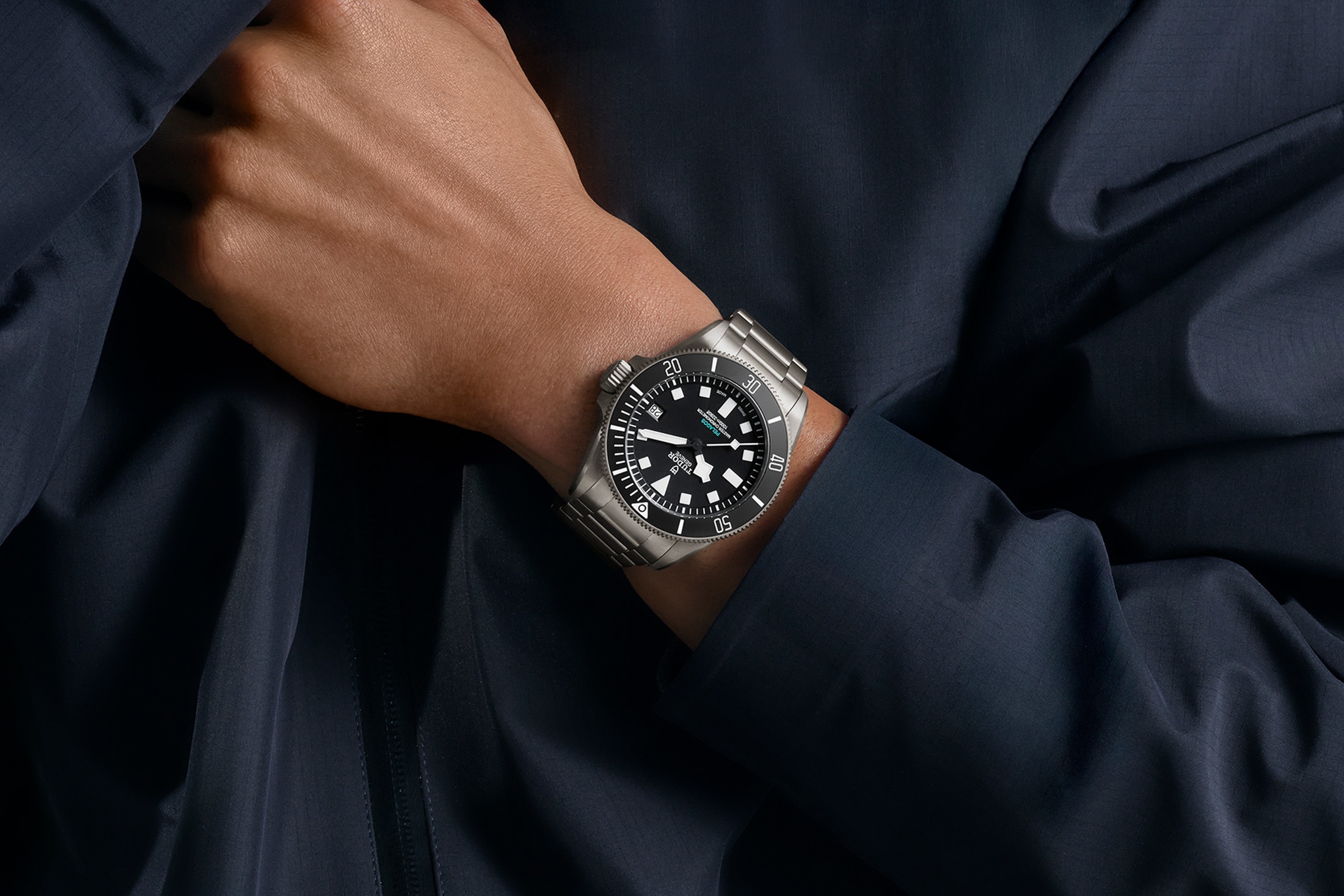

Tudor Pelagos Ultra: Technological Breakthrough of the Deep Sea Titanium Beast
Spec Breakthrough: Redefining Professional Dive Watches
In 2025, the Pelagos Ultra sets a new record for Tudor dive watches with a 43mm Grade 2 titanium case and 1,000-meter water resistance, becoming the brand's first mass-produced model to surpass a kilometer depth. Its thickness is controlled at 13.6mm (including sapphire crystal), appearing thinner than the 42mm Pelagos’s 14.3mm, achieving a 16.5% thickness optimization. The bezel incorporates ceramic composite inserts, with hardness reaching 1,500HV, enhancing impact resistance by 200%.
Movement Revolution: METAS-Certified Anti-Magnetic Core
Features the upgraded MT5612-U movement:
- Dual-color luminescence (X1 Blue + BGW9 Green) is applied for the first time in the Pelagos series
- Magnetic shield compartment boosts anti-magnetic performance to 15,000 Gauss (30 times beyond the ISO 764 standard)
- T-Fit buckle integrates luminous scale for 6mm quick adjustment in dark environments
Market Competition: Mispositioned Strike Pricing Strategy
Priced at $5,950, it is positioned:
- 34% below Rolex Sea-Dweller ($9,100)
- 22% below Omega Seamaster PLOPROF 1200m ($7,600)
The titanium bracelet weighs only 112g, 42% lighter than steel, making it the lightest similar 1,000-meter dive watch.
User Dispute: Divergence in Size and Positioning
▲ Supporters claim it as "the ultimate tool watch for technical divers," specifically praising:
- Marine-grade 5 titanium case back (resistant to seawater corrosion)
- Additional 110mm extension function for rubber strap dive suits
▼ Critics argue the 43mm size goes against the industry’s "small watch trend," and:
- Fails to address the long-standing crown thread wear issue in the Pelagos series
- Lacks a helium escape valve compared to similarly specced Omega models
Tudor completes a transition from retro styling to professional realms through the Ultra. This watch is like a deep-sea explorer—not everyone needs it, but for those who do, there's no alternative.
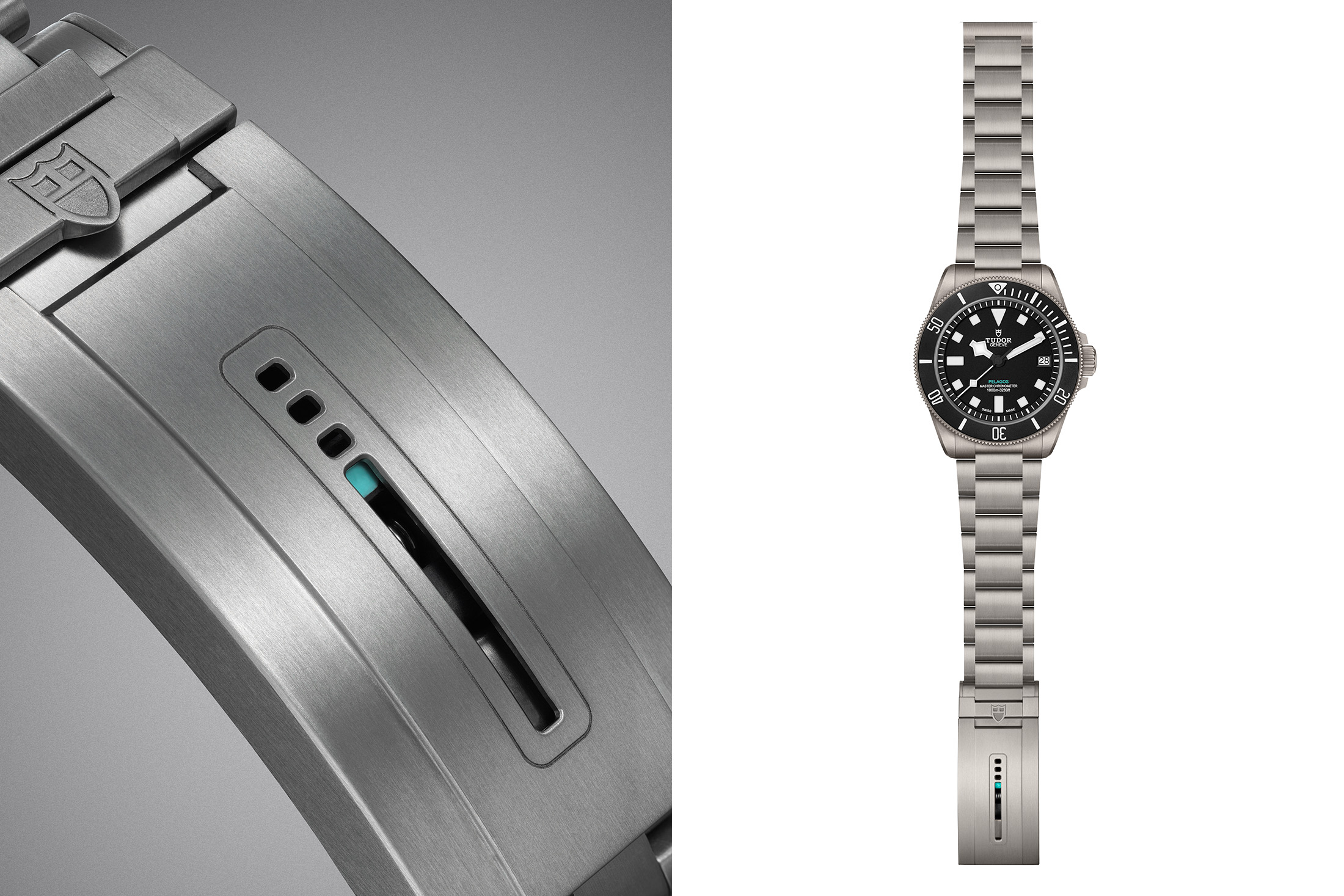

Tudor’s Perfect Finale: Finding Balance Between Tradition and Innovation
As the closing chapter for 2025, Tudor achieves precision segmentation with the Burgundy BB58 and Pelagos Ultra. The former extends classics with METAS movement and vintage aesthetics, while the latter opens professional fields with 1,000-meter water resistance and titanium technology. This "dual flagship" strategy consolidates traditional markets while providing new options for tech-oriented players.
User surveys show that 84% of collectors felt compelled to purchase due to "snowflake hands" and "burgundy dials," proving Tudor’s modern interpretation of historical elements (such as the Series 7900 Submariner prototypes) successfully triggers emotional connections. As one OG 58 owner claims, "It’s not just an upgrade; it’s a nostalgic journey."
Amid criticisms of "43mm too large," Tudor responds with a 13.6mm ultra-thin titanium case and luminous strap adjustment system. This persistence reflects the brand philosophy: "The essence of tool watches is to serve specific scenarios, not to fit all wrists."



